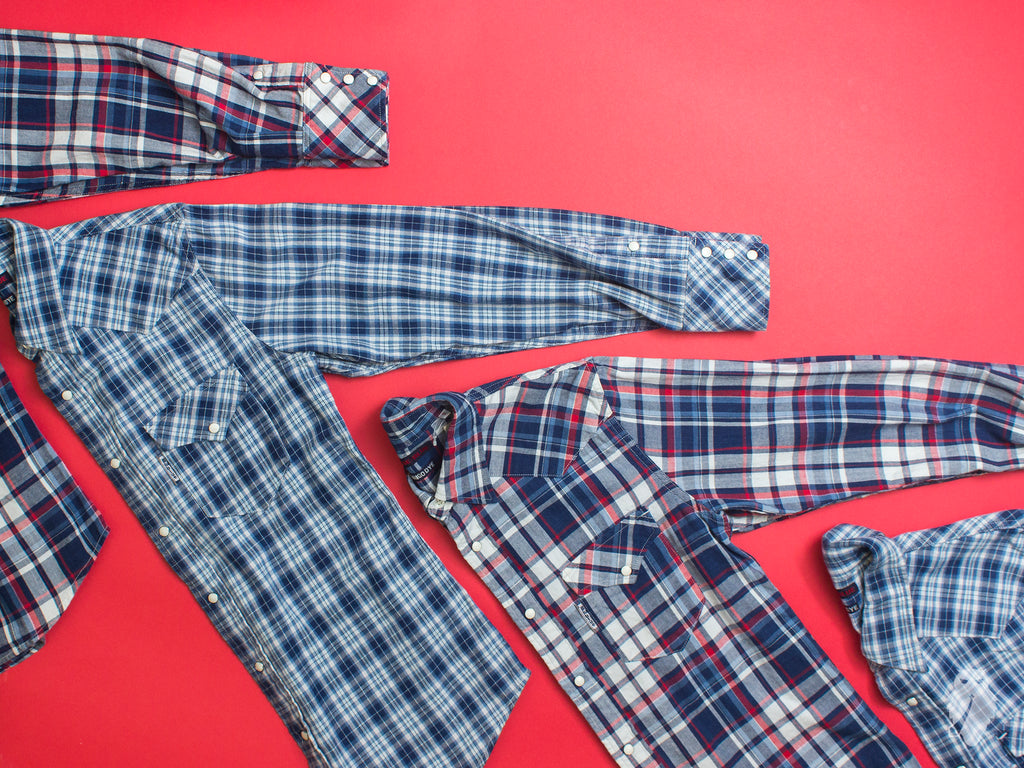
The iconic design of the Western shirt is a blend between popular dress of Europeans and traditional Native American garbs. Due to scarcity of materials, the shirt was originally sewn using leather and animal skins caught during expeditions, until the early 1900s when tailors received better access to cottons and wools. It was at that time that the shirt was updated to include many of the signature details found on the Western-style shirts of today. Longer lengths became customary to prevent the shirt from becoming untucked while on horseback, and the signature pointed yoke found across the shoulders and chest was added to provide better support and durability in the field. Snap closures were added in the early 1900s thanks to Rockmount Ranch Wear founder, Jack A. Weil — whose innovations allowed for better functionality for cowboys and rodeo riders in the event their cuffs were snagged on a fence.

However, it wasn’t until Hollywood adopted the Western shirt in the mid-1900s that it became a cultural icon. Films like The Treasure of the Sierra Madre (1948), High Noon (1952), and The Good, Bad, and the Ugly (1966) created a newfound craze for Western-inspired garments. It was at this point that designers began taking creative liberties of their own to differentiate their styles from traditional shirts. Snap button closure was forgone at the neck, instead replaced with a traditional button for much better breathability and functionality. Details and embroidery became either more or less animated — depending on the designer — and fabrics used went beyond just traditional denim and wool. The shirt became particularly popular in post-World War II era Japan, where Americana and Western-inspired workwear continues to be one of the primary subjects of local designers.

The storied history of the Western shirt makes it easy to see why it remains one of the most sought-after pieces in the world of fashion. Even after 150+ years, brands such as BLUE BLUE continue to reinvent the shirt in hopes of keeping the garment at the forefront of fashion for generations to come. Here’s to another 150 years.

